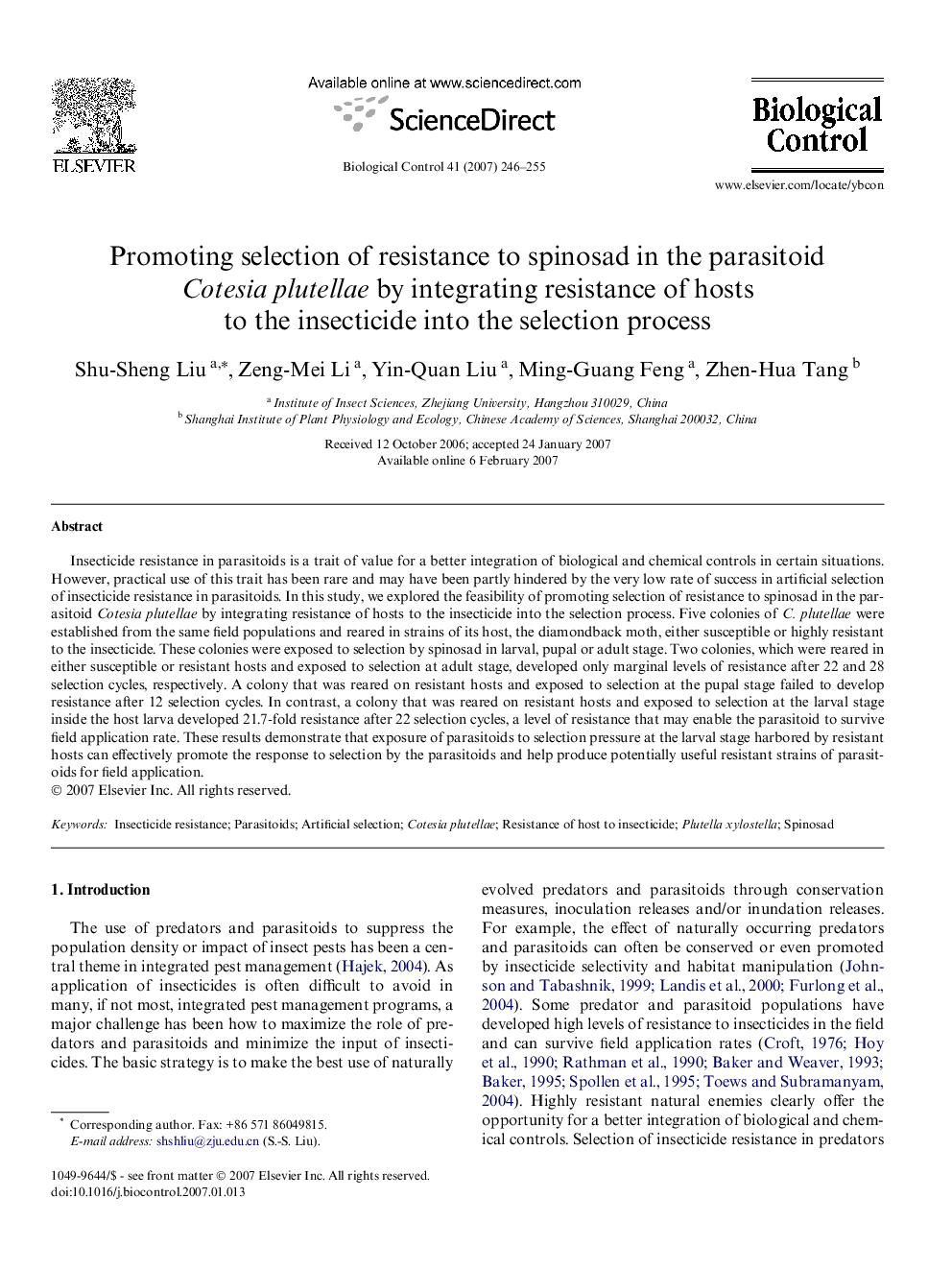| Article ID | Journal | Published Year | Pages | File Type |
|---|---|---|---|---|
| 4505089 | Biological Control | 2007 | 10 Pages |
Abstract
Insecticide resistance in parasitoids is a trait of value for a better integration of biological and chemical controls in certain situations. However, practical use of this trait has been rare and may have been partly hindered by the very low rate of success in artificial selection of insecticide resistance in parasitoids. In this study, we explored the feasibility of promoting selection of resistance to spinosad in the parasitoid Cotesia plutellae by integrating resistance of hosts to the insecticide into the selection process. Five colonies of C. plutellae were established from the same field populations and reared in strains of its host, the diamondback moth, either susceptible or highly resistant to the insecticide. These colonies were exposed to selection by spinosad in larval, pupal or adult stage. Two colonies, which were reared in either susceptible or resistant hosts and exposed to selection at adult stage, developed only marginal levels of resistance after 22 and 28 selection cycles, respectively. A colony that was reared on resistant hosts and exposed to selection at the pupal stage failed to develop resistance after 12 selection cycles. In contrast, a colony that was reared on resistant hosts and exposed to selection at the larval stage inside the host larva developed 21.7-fold resistance after 22 selection cycles, a level of resistance that may enable the parasitoid to survive field application rate. These results demonstrate that exposure of parasitoids to selection pressure at the larval stage harbored by resistant hosts can effectively promote the response to selection by the parasitoids and help produce potentially useful resistant strains of parasitoids for field application.
Keywords
Related Topics
Life Sciences
Agricultural and Biological Sciences
Agronomy and Crop Science
Authors
Shu-Sheng Liu, Zeng-Mei Li, Yin-Quan Liu, Ming-Guang Feng, Zhen-Hua Tang,
